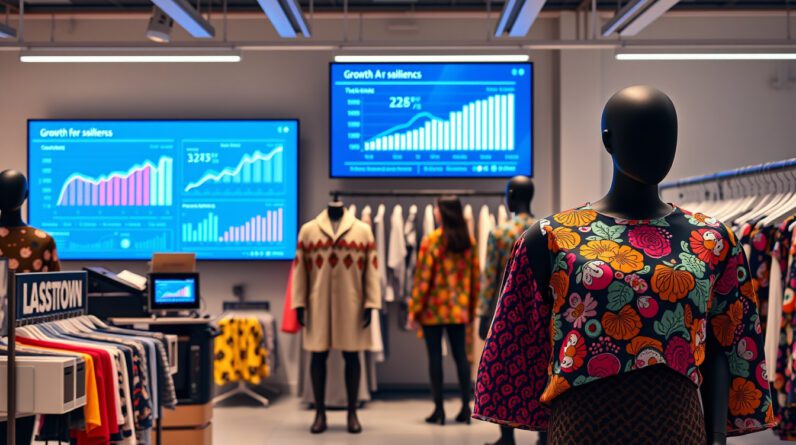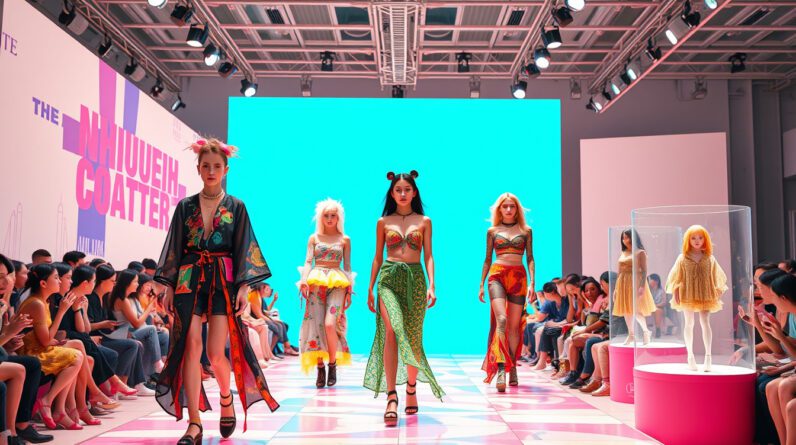
The fashion industry, notorious for its environmental impact, is undergoing a technological revolution. At the forefront of this transformation is artificial intelligence (AI), offering innovative solutions to deeply ingrained sustainability challenges. From design and manufacturing to consumer choices and recycling, AI is poised to reshape the industry, driving it towards a more ethical and eco-conscious future.
AI-Powered Design: Reimagining Creativity and Efficiency
Traditionally, fashion design has been a resource-intensive process, often leading to overproduction and textile waste. AI is changing this by empowering designers with tools that streamline the creative process and minimize environmental impact.
Generative Design: Imagine feeding an AI system data points like fabric type, color palettes, and current trends. The AI can then generate hundreds of design variations, allowing designers to explore a wider range of options while adhering to sustainability constraints. This not only sparks creativity but also reduces the time and resources wasted on physical prototypes.
Print and Pattern Optimization: AI algorithms can analyze vast datasets of patterns and prints, identifying those with minimal fabric waste during cutting and sewing. This level of precision reduces material consumption and minimizes the environmental footprint of production.
Virtual Prototyping and Sampling: Gone are the days of shipping physical samples across the globe. AI enables the creation of hyper-realistic 3D virtual prototypes, allowing designers to visualize and refine their designs digitally. This significantly reduces the need for physical samples, minimizing transportation emissions and resource use.
Smart Manufacturing: From Wasteful Production to Lean Operations
AI’s impact on sustainable fashion extends far beyond the design studio, revolutionizing manufacturing processes to reduce waste and optimize resource utilization.
On-Demand Production: AI-powered systems can analyze real-time demand trends and adjust production accordingly. This shift towards on-demand manufacturing minimizes overproduction, a major contributor to fashion waste.
Automated Cutting and Sewing: AI-driven robots are increasingly used in factories to perform tasks like fabric cutting and garment assembly with greater precision and speed than human workers. This not only improves efficiency but also reduces fabric waste caused by human error.
Defect Detection: Traditional quality control methods are often time-consuming and prone to errors. AI-powered vision systems can inspect garments and textiles for defects with remarkable accuracy, identifying flaws early in the production process. This minimizes material waste by catching defects before they lead to unusable products.
Personalized Recommendations: Guiding Consumers Towards Conscious Choices
Empowering consumers to make informed and sustainable fashion choices is crucial for a greener future. AI plays a key role in this by providing personalized recommendations and information tailored to individual preferences and values.
AI-Powered Styling Assistants: Imagine a virtual stylist that understands your style, budget, and sustainability preferences. AI algorithms can analyze your past purchases, browsing history, and even social media activity to recommend garments that align with your tastes while promoting eco-friendly brands and materials.
Transparency and Traceability: AI can power blockchain-based platforms that track the journey of a garment from raw materials to the consumer. This transparency empowers shoppers to verify ethical sourcing practices, fair labor conditions, and the environmental impact of their purchases, fostering greater accountability within the supply chain.
Revolutionizing Recycling: Closing the Loop on Fashion’s Linear Model
The fashion industry’s linear model of take, make, dispose is environmentally unsustainable. AI is helping to transform this into a circular economy where materials are reused and recycled, minimizing waste and resource depletion.
Textile Sorting and Identification: Sorting post-consumer textiles is a labor-intensive process that often leads to recyclable materials ending up in landfills. AI-powered systems can analyze the composition of fabrics and sort them accordingly, making recycling more efficient and economically viable.
Automated Garment Disassembly: Disassembling garments to recover valuable materials is a complex task. Robots equipped with AI-powered vision systems can identify different components of a garment, such as zippers, buttons, and seams, and disassemble them for efficient recycling.
Upcycling and Material Innovation: AI can analyze vast datasets of textile properties and suggest innovative ways to upcycle or repurpose old garments and fabrics, breathing new life into discarded materials and reducing the demand for virgin resources.
The Future of Fashion: Where Sustainability and AI Converge
The integration of AI into the fashion industry is still in its early stages, but the potential for positive impact is immense. As AI technology continues to advance, we can expect to see even more innovative applications that drive sustainability throughout the fashion lifecycle.
From reducing waste and pollution to promoting ethical practices and empowering conscious consumerism, AI has the power to transform the fashion industry into a force for good. By embracing these technological advancements, we can create a future where style and sustainability go hand in hand.





